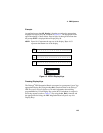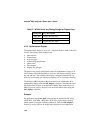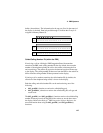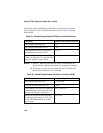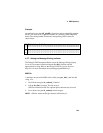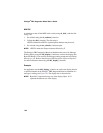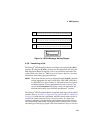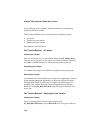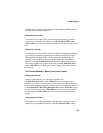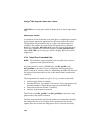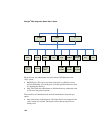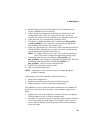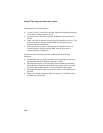4. PBX Systems
right Display key (which is Display Key 02) and <ext> is the PBX extension
to which you are transferring the call.
Completing the Transfer
To complete a call (supervised or blind) the application must go on-hook.
Another way to complete the transfer is with dx_dial(<ESC>KR), where
<ESC>KR acts as a key press (which is Display Key 02, the far-right display
key).
Aborting the Transfer
A transferred call can be aborted at any time (prior to completing the transfer)
by pressing the appropriate appearance key where the original call resides.
The application can perform this only in a supervised transfer mode. For
example, if the original call resides on the first appearance key (Memory
Button 01), dialing dx_dial(<ESC>K1) brings the original caller back to an
active state. Another way to abort the transfer is with dx_dial(<ESC>KP),
where <ESC>KP acts as a key press (which is Display Key 00, the far-left
display key).
Call Transfer Method 3 - Memory Key Press Transfer
Initiating the Transfer
Once in a connected call, you can initiate a transfer with
dx_dial(<ESC>K3,<ext>), where <ESC>K3 acts as a key press of the
transfer key (which is memory button 03) and <ext> is the PBX extension to
which you are transferring the call. Another way you can initiate the transfer is
with dx_dial(<ESC>KN,<ESC>KH,<ESC>KA), where <ESC>KN acts as a
key press of the Feature Key), <ESC>KH acts as a key press of the number 7
on the keypad, and <ESC>KA acts as a key press of the number 0 on the
keypad.
Completing the Transfer
To complete a call (supervised or blind), the application must go on-hook.
Another way to complete the transfer is with dx_dial(<ESC>KR), where
133



